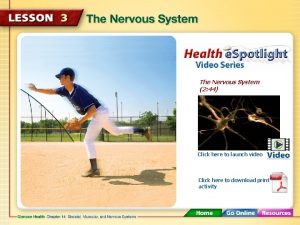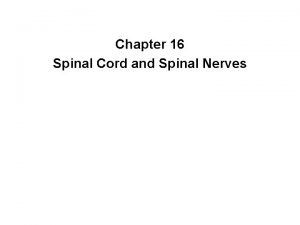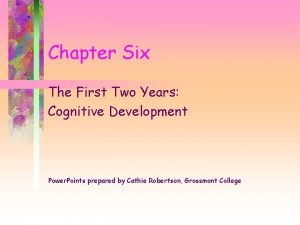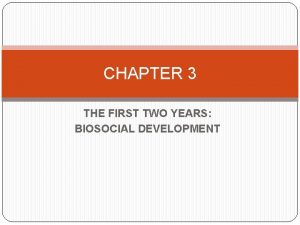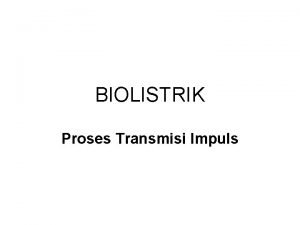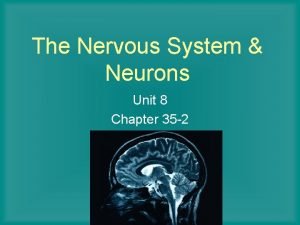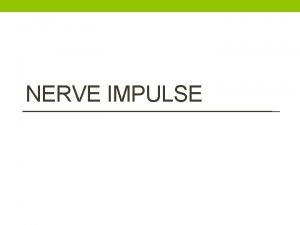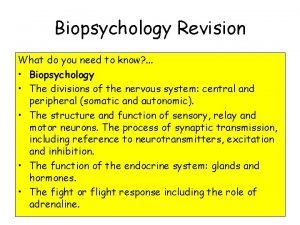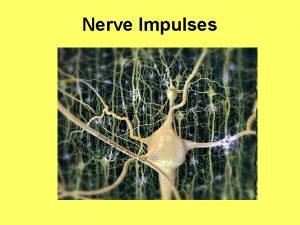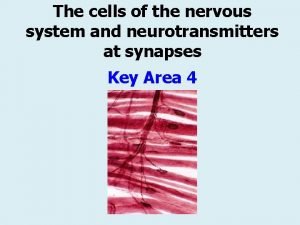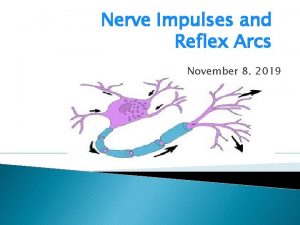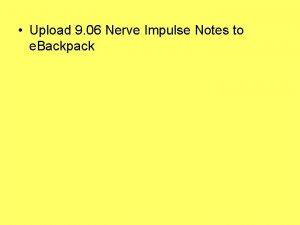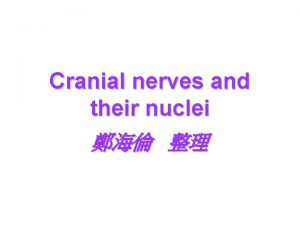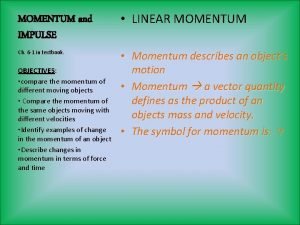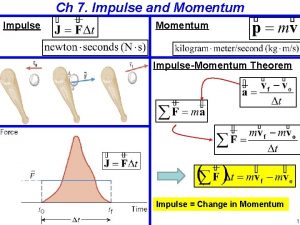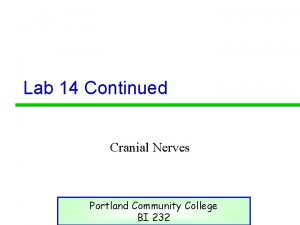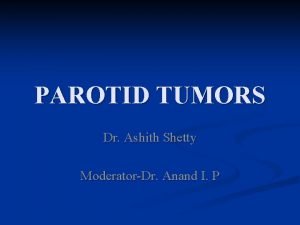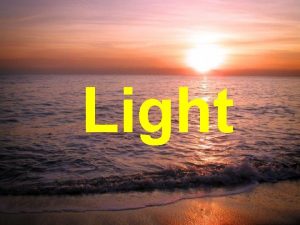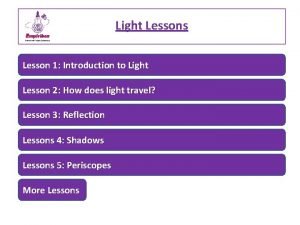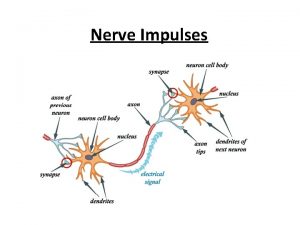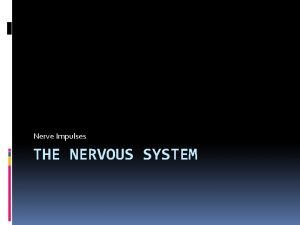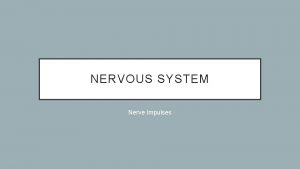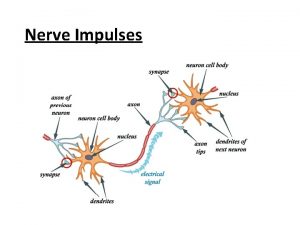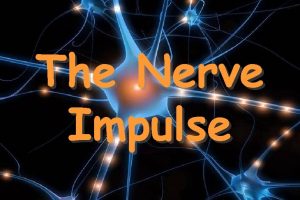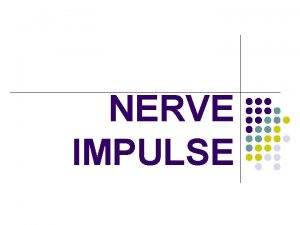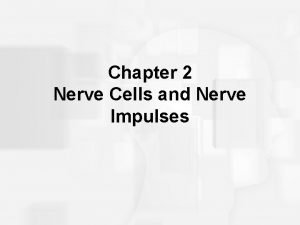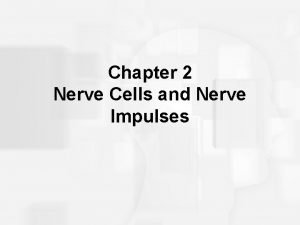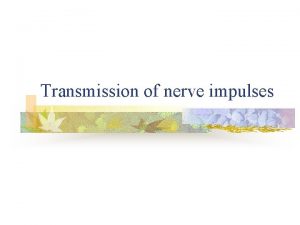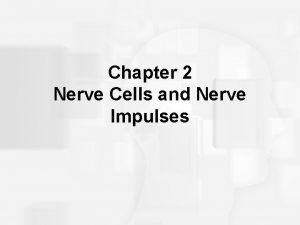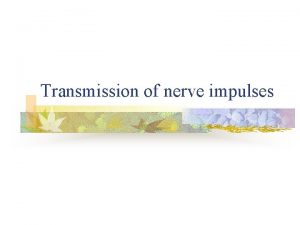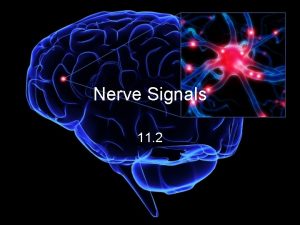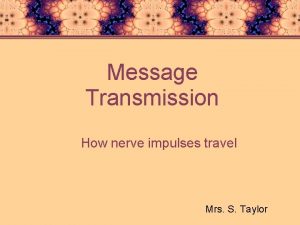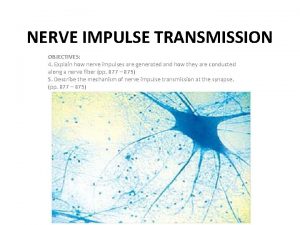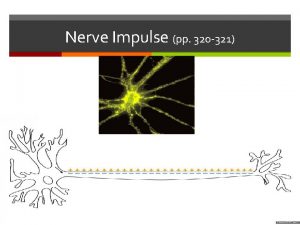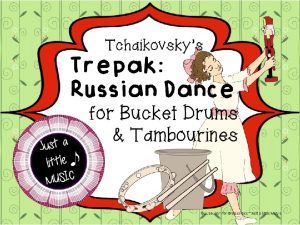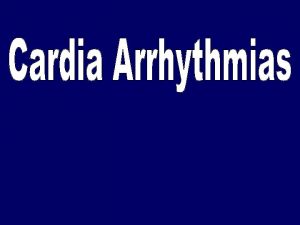Nerve Impulses How does an impulse travel along




















- Slides: 20

Nerve Impulses

How does an impulse travel along a nerve pathway? Review “Best of”, filling in your notes as you go. Effector Interneuron Motor neuron Receptor Sensory neuron Stimulus C B F D E A

• Nerve impulses have a domino effect. • Through a chain of chemical events, the dendrites pick up an impulse that’s shuttled through the axon and transmitted to the next neuron.

The entire impulse passes through a neuron in about 7 milliseconds- faster than a lightning strike. Introductory animation

Step 1 Resting Potential (the nerve fiber is not sending a signal) • Na. K pumps in the cell membrane actively transport 3 Na+ ions out of the cell for every 2 K+ ions pumped into the cell • The result- the interior of the cell is negatively charged with respect to the exterior- polarization • Resting potential animation and quiz


Step 2 Depolarization • A threshold stimulus is received. (the stimulation level that must be exceeded to elicit a nerve impulse) • Na+ channels in the membrane open and Na+ diffuses inward depolarizing the membrane

• What charge are sodium ions? • + • What will happen to the charge inside of the neuron? • It will become more + Depolarization animation

Step 3 Repolarization • K+ channels in the membrane open • K+ diffuse outward, repolarizing the membrane • Repolarizing animation

Step 4 Action Potential • The resulting action potential causes a local bioelectric current that stimulates adjacent portions of the membrane • The wave of action potential travels the length of the nerve fiber as a nerve impulse • Action potential propagation animation

Summary of Nerve Impulse • Nerve impulse summary video

The Synapse • A synapse or synaptic cleft is a gap that separates the axon of one neuron and the dendrites of the next neuron. • *Neurons do not touch. • Chemicals carry messages across the synapse.

Structures of the synapse 1 Presynaptic cell 2 Synaptic knob 3 7 5 4 6 8 Postsynaptic cell Axon, Dendrite, Mitochondria, Neurotransmitter, Receptor site, Synaptic cleft, Synaptic knob, Synaptic vesicle

What’s happening? Arrival of the nerve impulse

Arrival of the nerve impulse Opening of the calcium channels Binding of Ca 2+ to synaptic vesicles, neurotransmitter released into the gap Neurotransmitter binds to receptor Na+ enter the Ligand-gated channel Action potential generated in postsynaptic neuron


The synapse animation

Synaptic transmission Excitatory • “+” charged ions are released into postsynaptic neuron • May trigger a nerve impulse Inhibitory • “-” charged ions are released into postsynaptic neuron • Less likely a threshold stimulus will be reached

Something else to think about…. . The synaptic knobs of a thousand or more neurons may communicate with the dendrites and cell body of a single postsynaptic neuron. What will happen if both excitatory and inhibitory signals are received?

Dendrite Dramatize it! neurotransmitters Na+ receptor Axon synapse Dendrite Cell Body Nucleus Cl. Synaptic knob Needed: Presynaptic Neuron Cell body (1 student) Axon (Row 3) Neurotransmitters (4 students) Postsynaptic Neuron Receptors (4 -6 students) Sodium Ion (1 -2 students) Chlorine Ion (1 -2 student) Dendrite Branch (3 students) Nucleus (1 student)
 Incoming sensory impulses and outgoing motor impulses
Incoming sensory impulses and outgoing motor impulses Transmits nerve impulses
Transmits nerve impulses Integration center
Integration center Social impulses foster infant language
Social impulses foster infant language Social impulses foster infant language
Social impulses foster infant language Transmission of electrical impulses
Transmission of electrical impulses Nerve impulse transmission steps
Nerve impulse transmission steps Nerve impulse transmission steps
Nerve impulse transmission steps Transmission of a nerve impulse
Transmission of a nerve impulse Nerve impulse transmission steps
Nerve impulse transmission steps Label the features of a myelinated axon
Label the features of a myelinated axon Nerve impulse transmission
Nerve impulse transmission Irritability and conductivity
Irritability and conductivity Nerve impulse animation
Nerve impulse animation Trigeminal nerve which cranial nerve
Trigeminal nerve which cranial nerve A 2250 kg car traveling to the west slows down
A 2250 kg car traveling to the west slows down How does impulse relate to momentum
How does impulse relate to momentum Trigeminal nerve
Trigeminal nerve What does a nerve look like
What does a nerve look like Where dose light come from
Where dose light come from Rectilinear propagation of light
Rectilinear propagation of light
